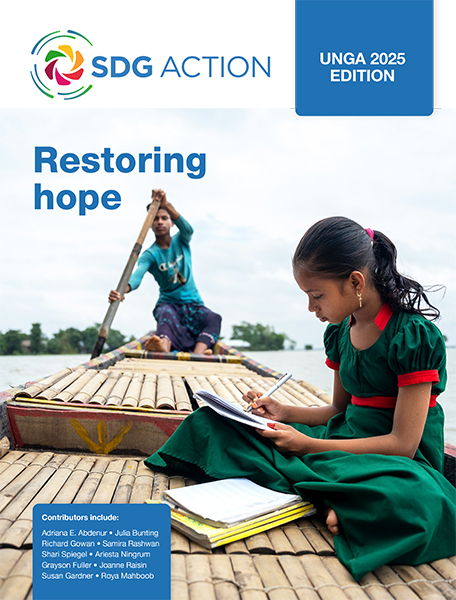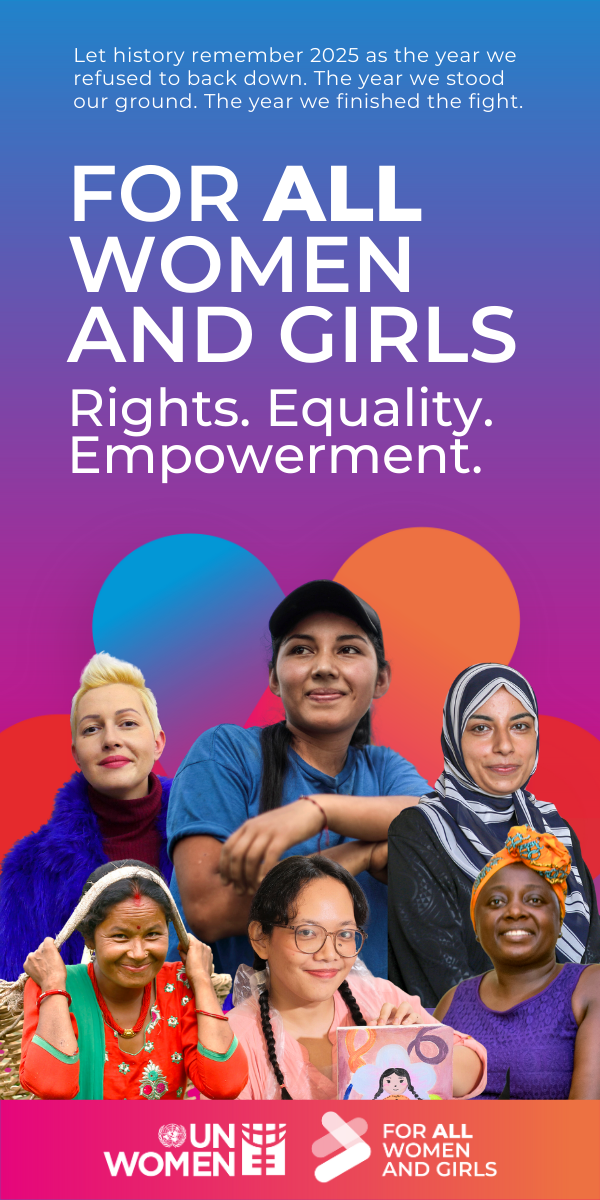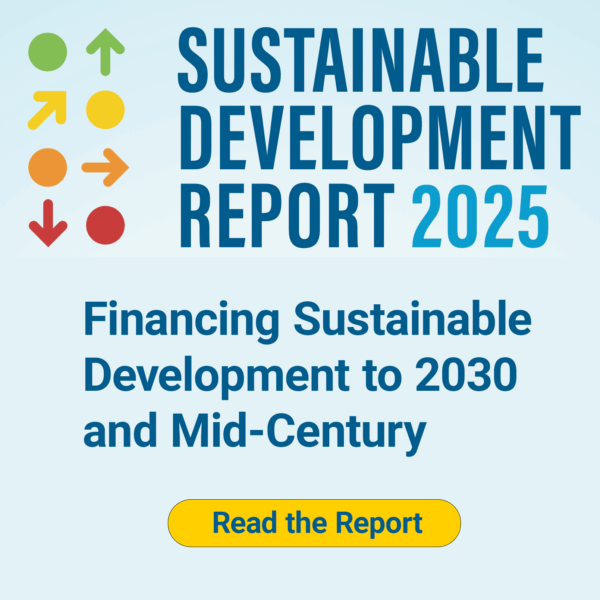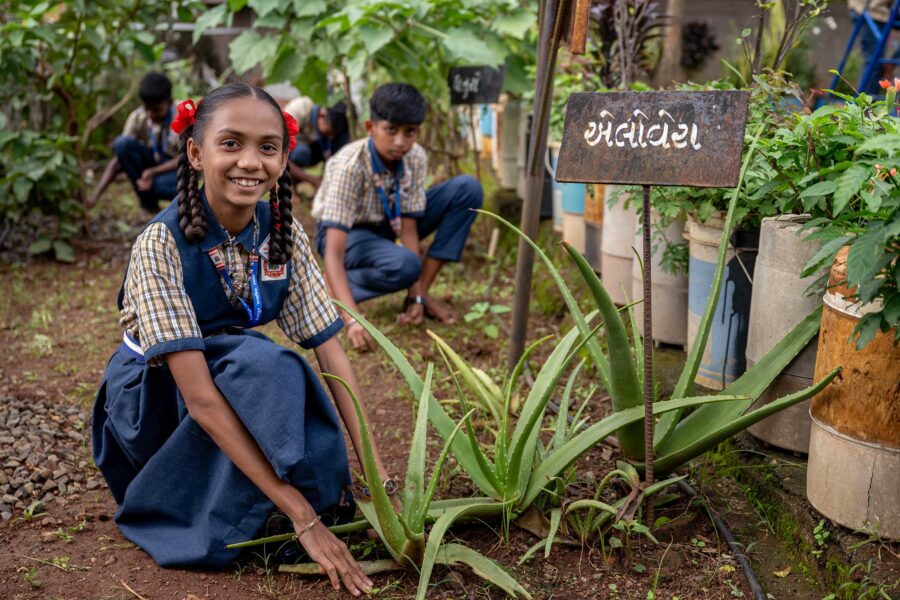Women and technology: a catalyst for equality and development
Denying women and girls access to technology is not a gap – it’s a systemic injustice with global consequences. Urgent action to expand digital access, education, and agency, especially in the world’s poorest countries, is essential to ensure that half the population can shape – not be shut out of – our digital future
Gender — Global
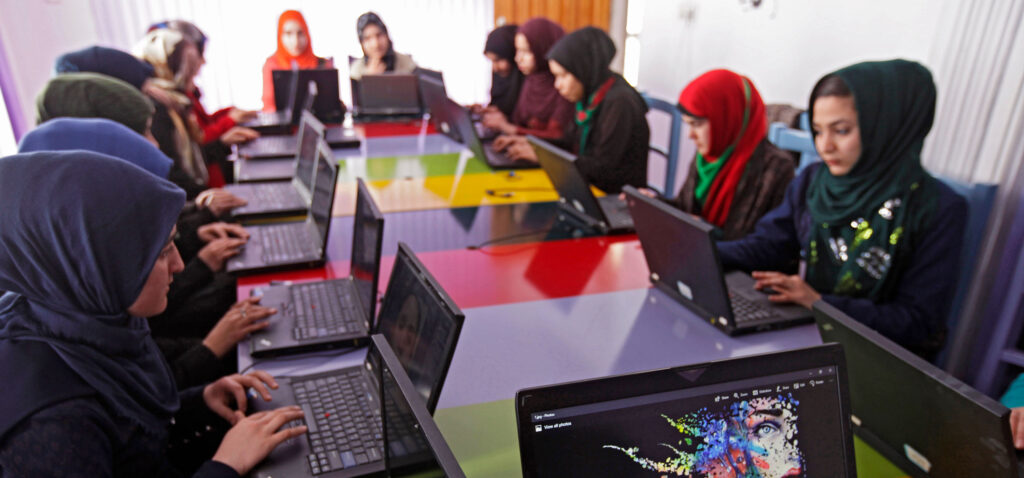
Who is afraid of girls who code? Whenever a girl in Herat, Afghanistan, sits down in front of a computer, there is much more at play than simply learning how to use it. The experience transforms her relationship with the outside world and, consequently, her perception of the boundaries and limitations she may face offline. These offline limitations previously defined the horizon of her ambitions, her ability to apply her talents, and her capacity to contribute to her community and the world at large. Technology enables her to envision a different life, overcome contextual limitations, access education, expand social networks, and even find work or business opportunities.
The impact of technology is not confined to the economic sphere. Equality and development are increasingly shaped by technology and connectivity, as evidenced by:
- how movements like #MeToo reverberate across countries
- how social media influences conflict zones, from the Rohingya genocide in Myanmar to Ethiopia
- how civil society mobilizes for change, often facing repression in turn
While this transformative power is well documented in academic literature, it also reflects my personal journey. My own path, which led to becoming Afghanistan’s first female tech CEO in 2010, began when I first sat down in front of a computer in Herat.
The immense potential for technology to empower, which I personally experienced, is tragically being withheld from most girls in Afghanistan today. Banned from secondary education beyond grade six, girls are denied basic digital literacy, effectively shutting them off from a world of opportunity.
Even beyond the extreme cases of gender apartheid, like that experienced in Afghanistan, access to technology – and connectivity for the 2.6 billion people who remain offline, particularly the many more who are poorly connected – is a predominantly gendered phenomenon. Globally, women and girls, especially in rural communities and the least developed countries (LDCs) where technology could yield the greatest developmental impact, are disproportionately excluded from the digital revolution that has structurally transformed economies and societies elsewhere for decades. While the overall digital gender gap has shown signs of narrowing, these specific demographics remain critically underserved due to barriers such as inadequate infrastructure, affordability issues, and gaps in digital literacy that preclude leveraging access to technology in the first place. Overcoming these fundamental barriers is key to unlocking vast potential for inclusive development and overcoming the exclusion of women and girls from the spaces where tomorrow is being built.
However, access and education in themselves remain insufficient. In the global tech sector, women constitute just over a quarter of the workforce. In countries facing conflict or repression, that figure often approaches zero. This disparity relegates even women in developed countries to being mere end-users at best, while largely excluding women and girls from the global majority from access to economic, social, and cultural advantages. Technology continues to reshape relations between citizens, businesses, and governments. Expanding connectivity, innovative digital services, and technology-driven industries are fueling economic opportunities, boosting productivity, and reshaping entire sectors. Yet, those designing the digital infrastructure and its applications for much of the world are all too often far removed from local needs and the practical uses for technological innovation.
This exclusion has consequences far beyond individual opportunity. When women are shut out of technology, communities lose out on their ideas, skills, and leadership. Development slows, inequality deepens, and the gap between those who shape the digital world and those left behind grows ever wider.
What we built and what was lost
Before the Taliban returned to power in 2021, Afghan women and girls who had received training in digital literacy and skills had started to build momentum for progress in education, economic development, and civil society activism. Through the Digital Citizen Fund (DCF), my team and I opened training centers across Afghanistan where girls could learn to use computers, access the internet, and understand the basics of online communication and digital safety. Remote education was also critical: by distributing devices and SIM cards to access e-learning platforms, we were able to reach populations otherwise cut off from such opportunities. We trained tens of thousands of girls in science, technology, engineering, and math (STEM) subjects and supported the creation of over 100 startups across the country. These skills opened a door, sometimes for the first time, to the outside world.
One of the most powerful examples of this shift was the Afghan Girls Robotics Team. For the first time, Afghan girls – many from conservative communities – gained international recognition by competing in global robotics competitions. They stood shoulder to shoulder with peers from countries with far more resources, and yet they won competitions. Their most significant achievement, however, was changing minds back home. Families who once questioned the value of girls’ education began to see things differently. Girls became local heroes, not just students. Their ideas were taken seriously, and their contributions to finding local solutions through applying STEM skills became undeniable. Societal progress and economic development should go hand in hand. For these Afghan communities, technology became the link between equity and development.
Other countries equally demonstrate how digital literacy can reshape communities. In Pakistan, initiatives like Tech Karo have helped young women from low-income neighborhoods gain training in web development and digital marketing. Investment in rural “smart” villages, where digital transformation connects those furthest behind to technology, can benefit education, healthcare, and rural economies. In Kenya, AkiraChix provides advanced programming and design courses for women from underserved areas. Many graduates go on to work in the country’s growing tech sector or start their own ventures.
Whatever barriers exist, the wave of young girls and women entering the tech sector means that conservative attitudes are being challenged gradually, as women prove their worth. This is despite them all too often facing sexism, harassment, and doubts about their ability to deliver results. The challenges seen in developed economies around workplace culture, bias, and advancement are magnified in LDCs, whose economies face additional fundamental challenges such as infrastructure roll-out, access, education, and cultural restrictions. All these factors matter and require serious engagement with the accompanying social, political, and engineering challenges.
In Afghanistan, despite the momentum DCF and others were building, progress remained fragile. Girls continued to face threats, harassment, and social pressure as change, fostered through and with communities, took time to solidify. Ultimately, technology reconfigures both social and economic life, and those aware and wary of this pay close attention to how it is wielded. When the Taliban returned, most of our programs had to shut down. Students were sent home, buildings were locked, and just like that, a generation of girls saw their futures slip out of reach after having proven themselves on both national and international stages. Communities were denied their contributions, and their talents and minds are now left to wither.
Skills alone aren’t enough
Teaching digital skills is essential, but it is not the whole answer. A girl can learn to code, but if she cannot access job opportunities or open a bank account – let alone run a business or speak freely – then her knowledge has nowhere to go. Education means very little without basic freedoms.
We also need to think beyond basic access. In Afghanistan, as in many other LDCs and developing countries, the affordability of smartphones and data is often a major hurdle for individuals. A widely accepted affordability measure is the “1 for 2” – 1GB of mobile prepaid broadband for 2% or less of average monthly income – which the Alliance for Affordable Internet calculated would make internet accessible to the lowest income quintile in more unequal economies. However, 2.5 billion people pay more than 30% of their monthly income for the cheapest smartphone in their market and the average cost as a proportion of income for LDCs is 46%. Even where access is facilitated, the issue persists of women and girls (especially those from the global majority) being reduced to end-users of foreign or decontextualized “solutions.”
Even in developed countries, women and girls remain significantly underrepresented in creating, using, and regulating technology. They are less likely to use digital services or work in tech, and face more online harassment. A 2021 McKinsey report found that only 52 women were promoted to managerial positions for every 100 men in the tech industry, with talent pipelines severely restricted: only 32% of entry-level hardware roles and 43% of software roles were held by women. These are generational challenges that should concern us all as we reflect on the compound effects of these disparities.
These straightforward and more complex layers of exclusion hinder women’s empowerment and diminish technology’s overall transformative potential. It has cost low and middle-income countries USD 1 trillion in GDP over the last decade, according to UN Women. This cost of excluding women from technology roles and their innovations is projected to expand to USD 1.5 trillion by the end of 2025. If anything, there should be a great self-interest for all stakeholders to facilitate women’s education and support their efforts in transforming STEM knowledge into tech products that contribute to greater returns on investment.
As we accept the deepening impact of technology on our present and future, the urgency of creating pathways for girls to become the creators, builders, and decision-makers within their own contexts and lived realities grows. In Afghanistan, this has led us to run underground schools and work with local communities who see the value of girls’ education and the potential of STEM and technology generally. We teach unbanked women how to leverage crypto wallets to gain control over their own finances for the first time. We have seen how these simple interventions often create ripple effects across families, communities, and – ultimately – generations.
Most countries may be further ahead on the basics, but all require political, civil society, and private sector collaboration on the journey ahead. Gender-blind and context-blind technology “solutions” are at best agnostic to local realities but often create unintended negative impacts. Social media disinformation in conflict zones has become a weapon of war, just as the same technology allows for organizing volunteers in humanitarian emergencies. DCF has been both a victim of the former and a beneficiary of the latter. As artificial intelligence (AI), robotics, and automation reshape the global job market and many traditional roles disappear, their impact on the social sphere will be equally important to track.
The World Economic Forum estimated that 85 million jobs could be displaced in the five years to 2025 due to automation, yet women remain underrepresented in alternative fields with high job growth potential. The International Labour Organization (ILO) warns that since women are predominantly employed in roles requiring low STEM skills, they are far more vulnerable to losing their jobs to automation. In ILO research of the Philippines labour market, 49% of employment was at risk but the risk for women was 140% higher than for men. The digital gender has its origins in childhood. According to UNICEF, in low and middle-income countries, adolescent boys are twice as likely to have the digital skills needed for future work compared with girls. In LDCs, this becomes not just a skills gap, but a future denied to countless talented girls who are not growing into educated women able to participate in and contribute to forces reordering society, economies, and entire countries and regions.
In Afghanistan in 2022, about 25% of men had access to the internet, compared with only 6% of women. Some provinces saw rates as low as 2%, meaning rural areas often had 0% of women with any access, let alone the digital skills to make use of it. Yet, these challenges affect all countries. Once again, even women in developed countries face exclusion.
What needs to happen
Women everywhere must be part of the industries that are redefining our lived realities, not as an afterthought, but from the start. This is critical, as we face technological changes accelerating beyond what states are able to regulate. This means teaching AI, cybersecurity, data science, and robotics alongside digital literacy. It means that, besides recognizing that the future is being built now, it is not enough to just give women a seat at the table: active efforts are required to enable women to lead and contribute to the discussions, often broadening the subjects and implications under consideration. Encouragingly, these ambitions are recognized as a priority for action in UN Women’s recent Beijing +30 Action Agenda and strongly reflected in the Political Declaration adopted by governments at the Commission on the Status of Women in March 2025.
To close the digital gender gap, we must support models that work under the pressures faced by those furthest left behind. In places where schools are closed or unsafe, remote and low-tech solutions, offline apps, solar-powered devices, and mobile training units can keep learning alive. These tools already exist. Critically, they must be linked to community-based structures, such as technology hubs with peer-to-peer learning models that train local women and girls as multipliers for their fully offline sisters. They also need to be integrated with or linked to existing wider community structures, such as women’s support groups, that allow for scaling such programs at acceptable risk levels. Working with and through communities grants a necessary level of protection and legitimacy against what can be perceived and rejected as foreign influence. Although such solutions and approaches have been deployed by DCF and others, predictable and continuous funding remains a key challenge to what is likely to be a sustained effort for generations to come.
For my homeland, the Afghan diaspora plays a vital role. Across the world, Afghan women in exile are mentoring and supporting students still inside the country. They share resources, teach remotely, and fund small programs that fly under the radar. This is slow, quiet work, but it is saving and enabling futures, providing a minimum safety net without which even fewer girls would be able to access basic education and digital literacy. It deserves more recognition and support, as the impact of each investment creates a multiple in returns. It also requires us to face the scale of the challenge, moving beyond celebrating individual initiatives to considering how we can scale up solutions that are proving effective or have the potential to be.
Funding should not be seen as limited to charity. Worldwide, women-led startups receive less than 2% of venture capital. For women in conflict zones, access to funding is even harder. We need new funding pathways: grants, seed funds, micro-investment platforms, and solutions tailored to local challenges, designed for the women at the frontlines of deploying technology for equity and development.
We also cannot ignore the role of big tech. Many companies promote equality and inclusion in their marketing while doing business in places that restrict women’s rights. This contradiction must end. Governments and development agencies should make gender equity in digital access a condition of partnerships, licensing, and infrastructure deals. If we can create rules for trade, we can create rules for fairness.
The path forward
Despite the odds, Afghan girls are still learning. Some study in secret. Others use virtual private networks (VPNs) to access online courses after the Taliban banned vast numbers (23 million, according to their own claims) of websites, although they likewise announced the rollout of 4G across the country. Some girls have left their homeland and are continuing their education in exile. Their commitment has not faded. As much as education and training around digital literacy is critical, so are enabling and sustaining networks for building capacity to organize and support each other for a future free of restrictions. Until that future arrives, what they need most right now is for the world to stop turning away. Each year, hundreds of thousands of girls are banned from continuing their education and developing their talents in Afghanistan. Beyond requiring international pressure on the de facto authorities, support for local organizations such as ours proves there are ways to at least arrest the total cessation of education for, and contributions from, Afghan girls and women.
We have the technology. We have community support. We know what works. And even beyond Afghanistan, thousands of women across Africa, Latin America, and South Asia are ready to enable and implement tailored solutions that use technology for driving equality and development, if given the chance.
I have seen it myself. I have watched girls go from never having touched a computer to speaking and competing at international conferences. I have seen what can happen when one girl learns a new skill and teaches it to ten others, when they win scholarships to the most prestigious universities in the world and return to create businesses and initiatives that transform communities and industries. I have seen how quickly change can spread when we enable and allow for it.
Technology can close the distance between isolation and opportunity, but only if we ensure it’s open to everyone. It requires all stakeholders – all of society, but particularly those most affected and furthest left behind – to collaborate on leveraging technology for equity and development. This path is inextricably linked to girls’ and women’s education, training in digital literacy, and how we enable it. Girls should not be fighting alone to be part of the future.
They should be leading the way in building it.
Featured in:
UNGA 2025 edition: Restoring hope
An effective multilateral response is needed for an ever increasing number of crises. At the same time, the UN – the heart of the multilateral system for 80 years – is under attack from nations trying to defund and disempower it. Radical reform is clearly needed. Whatever form that takes, it should be guided by and designed to support the SDGs.
This edition considers the impacts of inequality and conflict, and explores ways to build a fairer, safer future through education, technology, economic development and global partnerships.
Authors include Adriana E. Abdenur, Julia Bunting, Richard Gowan, Samira Rashwan, Shari Spiegel, Ariesta Ningrum, Grayson Fuller, Joanne Raisin, Susan Gardner and Roya Mahboob.
Publication date: 22 September 2025

